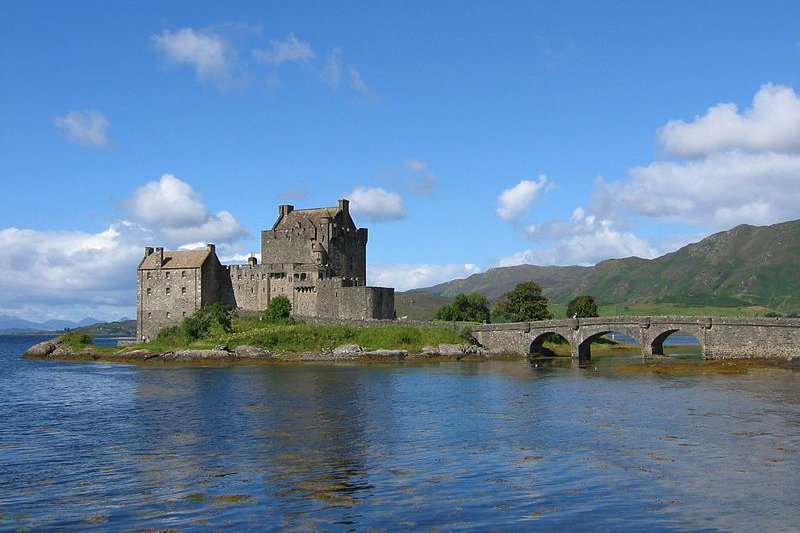 Eilean Donan Castle in Castle
Eilean Donan Castle in CastleSource: https://commons.wikimedia.org/wiki/File:Eilean_Donan.jpg
Author: Bigar

Scotland is one of the component countries of the United Kingdom. It is located on the northern part of the island of Great Britain, sharing a border with England. Scotland is bounded by the North Sea to the east, the Atlantic Ocean to the north and west, and the North Channel and the Irish Sea to the south west. It also includes over 790 islands including the Northern Isles and the Hebrides.
Scotland covers 78,772 sq km (30,414 sq mi). It has a population of 5.2 million people (2011 estimate). Its largest city is Glasgow while its second largest and capital is Edinburgh. Its third largest city, Aberdeen, is known as Europe's Oil Capital, as it is the main city off the Scottish waters, which has the largest oil reserves in the European Union.
Cities and Towns of Scotland
Council Areas of Scotland
- Aberdeenshire
- Angus
- Argyll and Bute
- Clackmannanshire
- Dumfries and Galloway
- East Ayrshire
- East Dunbartonshire
- East Lothian
- East Renfrewshire
- Edinburgh
- Falkirk
- Fife
- Glasgow
- Highland
- Inverclyde
- Midlothian
- Moray
- North Ayrshire
- North Lanarkshire
- Orkney Islands
- Outer Hebrides (Na h-Eileanan Siar)
- Perth and Kinross
- Renfrewshire
- Scottish Borders
- Shetland Islands
- South Ayrshire
- South Lanarkshire
- West Dunbartonshire
- West Lothian
Major Tourist Destinations of Scotland
- Cairngorms
- Islay
- Loch Lomond
- Loch Ness
- Torridon
- Trossachs
World Heritage Sites in Scotland
- Heart of Neolithic Orkney
- New Lanark
- St Kilda
Places of Interest in Scotland
A brief history of Scotland
Scotland has been settled for thousands of years, although evidence of human habitation has been erased by repeated glaciation. Hunter-gatherers are believed to have lived in Scotland since 12,500 years ago, with permanent houses being built as early as 9,500 years ago. Among evidences of early habitation that have been discovered include the well-preserved prehistoric village of Skara Brae, along with burial and ritual sites in the Northern Isles and Western Isles.During Roman times, the Romans occupied the southern and central part of Great Britain, including southern Scotland. That was the earliest written protohistory of the land. Roman historian Tacitus mentioned of an ancient Scottish tribe, known as the Caledonians, who resisted Roman occupation, attacking the Roman defences and nearly overcoming an entire legion.
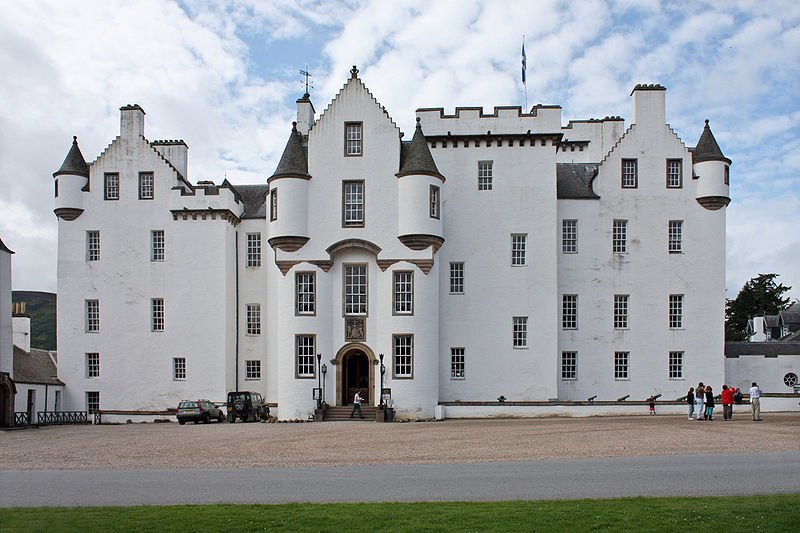 Blair Castle
Blair CastleSource: https://commons.wikimedia.org/wiki/File:Blair_castle_-_facade.jpg
Author: Eusebius

In the 5th century, the Gaels from Ireland established the kingdom of Dál Riata on the western coast of Scotland. However it was the Kingdom of the Picts that was the direct predescessor to the Kingdom of Alba, a Gaelic name for the Kingdom of Scotland. According to some historians, it was established in response to Roman imperialism.
The Kingdoms of Scotland and England are to share the same king since the Union of the Crowns in 1603. It began with James VI, the King of Scotland, accending to the throne of England, effectively merging England under Scottish Crown. This happened after his cousin and preceding monarch, Queen Elizabeth I of England, died unmarried and childless in 1603. Charles II was the last Scottish monarch to be crowned in Scotland, at Scone in 1651.
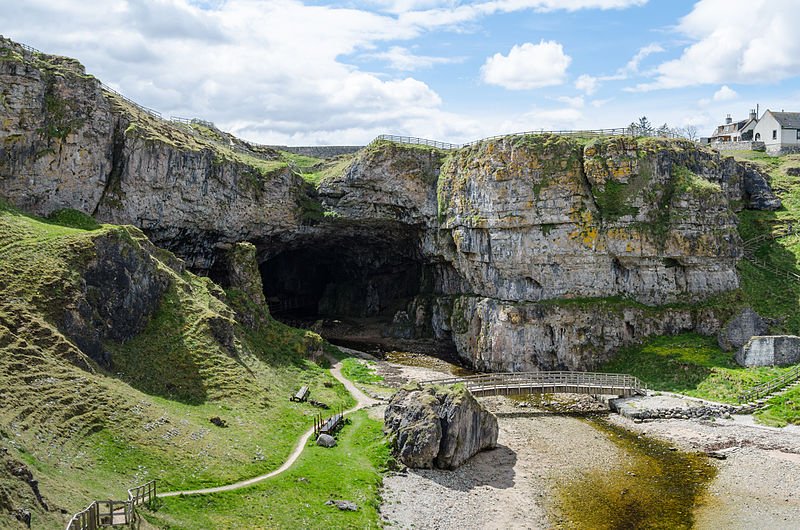 Smoo Cave in Durness, Scotland
Smoo Cave in Durness, ScotlandSource: https://commons.wikimedia.org/wiki/File:Entrance_to_Smoo_Cave.jpg
Author: Florian Fuchs

During the Industrial age, Scotland produced many scientists and engineers, among them James Watt, Robert Stevenson and John MacAdam. By 1911, it already had a population of 4.8 million people. It provided manpower, ships and machinery, among others, to assist British effort in the First World War. By the end of the Second World War, however, Scotland's economy was already in decline, faced by stiff competition from overseas and mired by industrial disputes and inefficiencies.
By the mid 20th century, many of the urban areas of Scotland were facing high unemployment and economic stagnation. The country only began to recover in the later part of the 20th century, with a resurgence in financial industry and electronics manufacturing, boosted by the gas and petroleum industries of the North Sea.
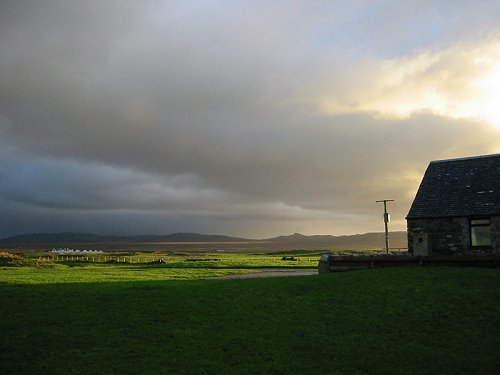 Islay, Scotland
Islay, ScotlandSource: https://commons.wikimedia.org/wiki/File:Wfm_islay.jpg
Author: Finlay McWalter

Geography
Scotland is about the same size as the Czech Republic. It is on the whole more mountainous than England and Wales. The tallest mountain in Scotland is Ben Nevis at 1,344 m (4,409 ft). River Tay, the longest river in Scotland as well as in the whole United Kingdom, flows from western Scotland, across the Highlands, in the centre of Scotland, to its mouth south of Dundee, a distance of 190 km (118 mi).Climate
Scotland experiences a temperate and oceanic climate. The Gulf Streams from the Atlantic moderates the climate, making winters milder but summers colder and wetter. In general, Scotland is colder than the rest of the United Kingdom.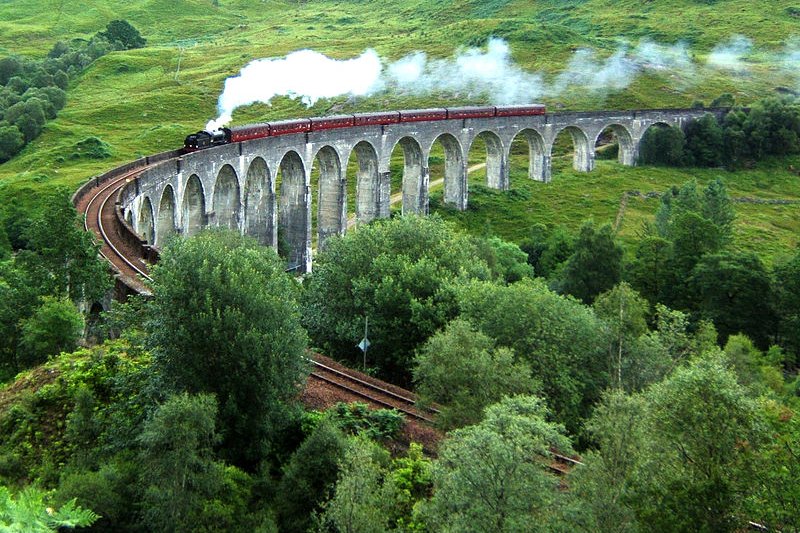 Glenfinnan Viaduct
Glenfinnan ViaductSource: https://commons.wikimedia.org/wiki/File:Glenfinnan_Viaduct.jpg
Author: Nicolas17

Going to Scotland
By PlaneThere are now international airports in Aberdeen, Edinburgh, Glasgow and Inverness providing connection with a growing number of destinations in the United Kingdom and Europe.
By Train
There are five train operators offering services linking Scotland with England. From London, you can take a train from London Kings Cross and London Euston to all the major cities of Scotland.
By Road
The M74 is the main motorway linking Scotland with England, running from the south of Scotland to Carlisle in England.
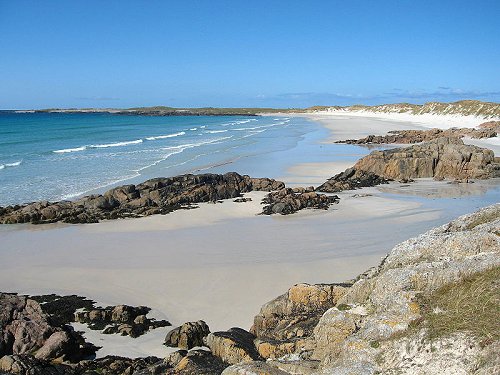 The island of Tiree, in the Scottish Inner Hebrides
The island of Tiree, in the Scottish Inner HebridesSource: https://commons.wikimedia.org/wiki/File:Tiree_3.JPG
Author: Milady G

 Latest updates on Penang Travel Tips
Latest updates on Penang Travel Tips
 Map of Roads in Penang
Map of Roads in Penang
Looking for information on Penang? Use this Map of Roads in Penang to zoom in on information about Penang, brought to you road by road.
Copyright © 2003-2025 Timothy Tye. All Rights Reserved.

 Go Back
Go Back